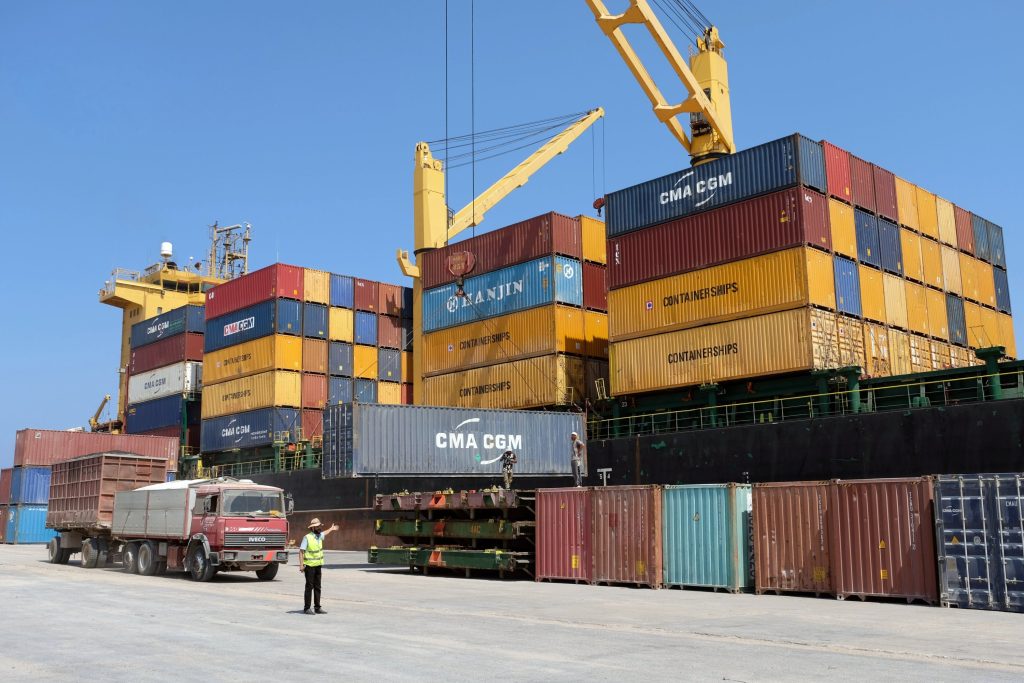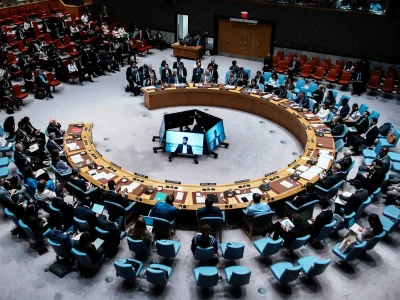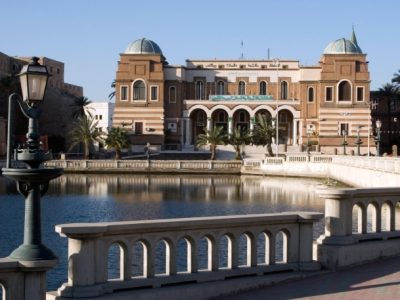Libya Port Development: How Shifting Trade Routes Are Redrawing the Mediterranean Map
As war and geopolitics upend shipping routes, Libya finds itself at a crossroads. In early 2024, attacks on vessels in the Red Sea and Yemeni waters forced carriers to reroute from the Suez Canal to longer voyages around the Cape of Good Hope. UNCTAD’s Review of Maritime Transport 2025 notes that container traffic at Spain’s Valencia and Barcelona rose 14–24 % in January–September 2024 as traffic shifted west. The United Nations warns that global shipping is facing volatility not seen since the Suez Canal closure of 1967: ships that once crossed the Red Sea in days now take weeks on southern detours, freight rates swing wildly, and long‑distance rerouting increased tonne‑miles by about 6 %. UNCTAD expects seaborne trade to stall in 2025, with volumes rising only 0.5 % and transit through the Suez and Hormuz straits still 70 % below 2023 levels. Rising transit costs and port congestion affect developing economies the most. For Libya, these shifts undoubtedly present both risk and opportunity.
Shifting Trade and Libya’s Exposure
Libya’s long Mediterranean coastline lies between Europe, the Maghreb and the Middle East. When the Red Sea corridor was threatened, many Asia–Europe vessels looped around Africa. This rerouting boosted traffic at western Mediterranean ports and highlighted the need for alternate trade corridors. Libya’s ports therefore stand to gain if they can attract diverted trade flows; but the global slowdown makes competition intense. UNCTAD notes that freight rates have been volatile since 2024, with longer voyages increasing costs and carbon emissions. Waiting times at ports have also risen: average waiting time at developing‑country ports grew from 10.2 to 10.9 hours between December 2023 and March 2024. These delays are demonstrating the strain on infrastructure worldwide and the need for efficient terminals.
Libya’s own vulnerability is clear in its import bill. The country relies heavily on maritime routes for food, consumer goods and fuel. Fuel smuggling, a long‑standing problem, compounds this vulnerability: analysts estimate Libya loses around US$750 million per year to smuggling, with 495 million litres of fuel stolen annually – about 17 % of domestic consumption. Smuggling drains public revenues and undermines efforts to improve distribution, making any disruption to legal fuel imports even more damaging.
Despite these challenges, port development is increasingly seen as a way to diversify Libya’s oil‑dependent economy. Western and regional investors are paying attention: Gulf companies have visited the Sirte Free Zone to explore joint ventures in port infrastructure; Chinese firms have signed memoranda to study upgrades at Misrata; and European lines are adding Libya back into their schedules. Libya’s ability to turn these courtships into lasting partnerships will be critical for economic resilience.
Port Ambitions and Infrastructure
Libya’s major ports serve different regions and functions. Misrata Free Zone is the country’s busiest container port and a flagship for reform. When Tripoli and Benghazi were closed during conflict, Misrata became a hub for Libya’s imports. In January 2024 the port welcomed the Flora, the largest container ship to call at a Libyan port in years – 300 metres long, 40 metres wide and drawing more than 12.5 metres. The vessel carried 5,250 TEUs, including 4,481 transit containers destined for Germany, Italy, Brazil and Egypt. Misrata’s ability to accommodate such a ship signals its growing capabilities. The port operates a government‑backed free zone with streamlined customs and modern digital systems. In mid‑2025 Japan’s Ocean Network Express (ONE) launched weekly service via Misrata, and a freight line now links Egypt’s Damietta port to Misrata. Yet capacity constraints remain: Misrata handled about 1.2 million TEUs in 2020 and aims for 5 million, but deeper berths and more cranes are needed.
Tripoli is Libya’s largest port by area, offering general cargo, container, Ro‑Ro and oil terminals. The Libyan Ports Company notes that Tripoli has 27 berths and a design throughput of roughly 500,000 TEUs in its first phase. A new container yard and passenger terminal opened in recent years, and 2023–2025 saw the resumption of ferry services and Mediterranean feeders linking Tripoli and Misrata to Italian ports. Tripoli’s navigation channel is about 12 metres deep – adequate for mid‑sized ships but shallow compared with major Mediterranean hubs – and authorities plan dredging and equipment upgrades. Investors say progress depends on stabilising politics and improving port management.
Benghazi, the main port for eastern Libya, is undergoing reconstruction. Years of fighting left facilities damaged. In early 2025 military leaders inspected an expansion plan to boost capacity and modernise cargo handling. Prior to the conflict Benghazi handled about 200,000 TEUs; the new works aim to restore that capacity and attract international lines. Tarros/Messina’s Mediterranean service plans to include Benghazi, and local firms are opening routes to Syria. However the port still needs improved security and better cranes and yards. Nearby Derna port, which saw its first commercial ship in a decade in 2023, remains small.
Tobruk in the far east serves mainly oil and fuel imports. Its fuel dock was closed for two years but reopened in late 2024. The first post‑hiatus tanker delivered 30,000 tonnes of gasoline in November 2024, easing pressure on Benghazi’s fuel supply. Tobruk’s pipelines and storage still require repair, but reopening reduces transport costs for eastern Libya. Al‑Khums, a smaller port near Tripoli, handles local commerce and would need deep‑water berths to become a significant hub.
Beyond the established ports, Libya is investing in Sirte. Once a battlefield, Sirte’s port resumed commercial operations in February 2025 when the general cargo vessel Sea Horizon arrived from Alexandria, Egypt. The Maritime Executive reports that the port is now seen as a strategic project to link Libya with landlocked neighbours such as Chad, Mali and Niger. Sirte Free Zone Authority is also building the “SSS” highway – a US$2 billion project connecting the port to Sabha and other southern cities. Plans include smart port systems (reportedly with Huawei’s support) and specialised terminals. The port recently completed a bitumen unloading platform and has welcomed the Turkish general cargo vessel Lutuf carrying about 1,000 tonnes of goods. Gulf investors have shown interest in Sirte, touring the port and free zone to examine development plans. Such engagement underscores Libya’s appeal as a logistics gateway for the Sahel.
Opportunity and Challenges
Investing in port infrastructure could yield broad economic benefits. Better terminals and streamlined customs would diversify revenue, create jobs in freight forwarding and warehousing, and increase customs receipts – every container processed generates fees. Upgraded ports could also integrate Libya into regional trade pacts such as the African Continental Free Trade Area, allowing it to serve as an import‑export hub linking Mediterranean routes with African markets. Improved ferry and cargo links to Europe, Turkey and North Africa would boost tourism and industrial exports. The World Bank and UN agencies emphasise that modernising logistics can help Libya diversify beyond oil, expand manufacturing and trade, and create thousands of jobs.
Yet the obstacles are significant. Much of Libya’s port infrastructure predates 2011; berths, warehouses and cranes are outdated. Channel depths are insufficient: Tripoli’s entrance is only around 12 metres, compared with 15–18 metres at leading Mediterranean ports. Customs processes outside Misrata are slow and opaque, and the country ranks low on the World Bank logistics performance index. Security and governance issues have led to repeated blockades costing billions, while corruption and weak institutions raise operational costs. Fuel smuggling siphons resources and erodes state authority. Without a stable political settlement and improved management, foreign investors will remain cautious.
The global shipping slowdown adds urgency. As UNCTAD’s report argues, geopolitics and climate shocks are reshaping trade routes and increasing costs. For Libya, these shocks highlight the need to build resilient infrastructure that can capture diverted flows yet withstand market volatility. The presence of major carriers at Misrata and the reopening of Sirte and Tobruk show that progress is possible. If Libya can deepen and modernise its ports, streamline regulation, clamp down on smuggling and ensure security, it could transform its maritime gateway from a vulnerability into a driver of prosperity. With careful policy and sustained investment, Libya may turn these rough seas into a springboard for economic revival.




